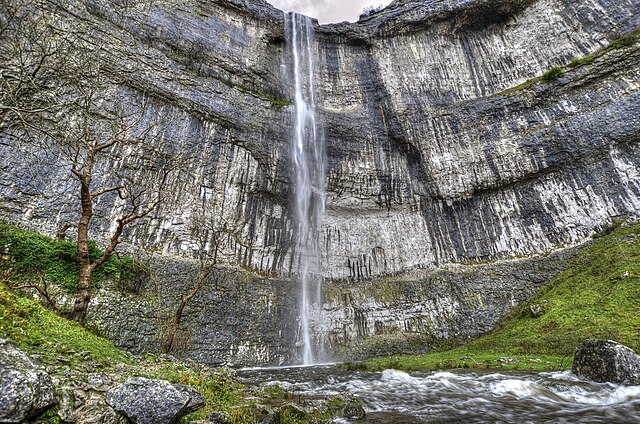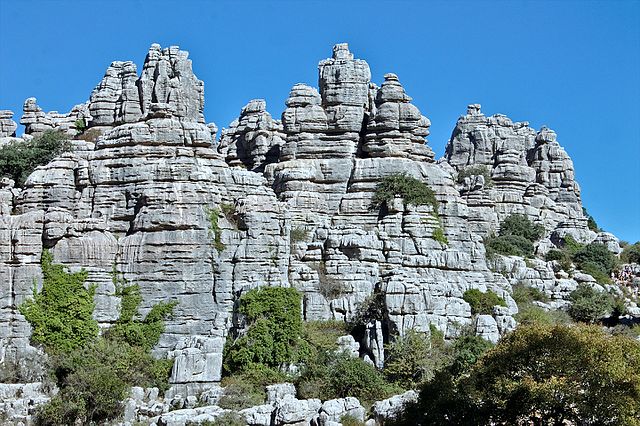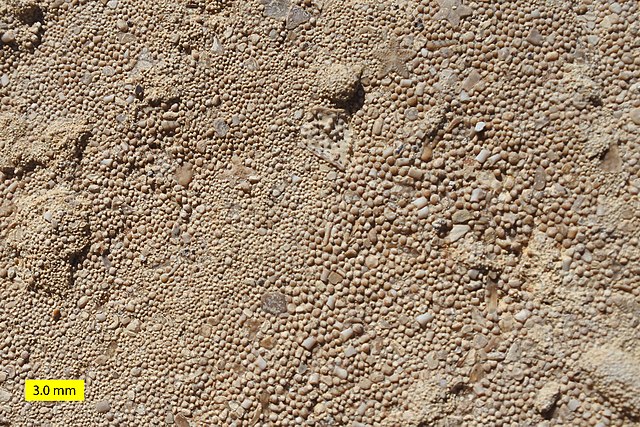Malham Cove is a large curved limestone formation 0.6 miles (1 km) north of the village of Malham, North Yorkshire, England. It was formed by a waterfall carrying meltwater from glaciers at the end of the last Ice Age more than 12,000 years ago. Today it is a well-known beauty spot and rock climbing crag within the Yorkshire Dales National Park. A large limestone pavement lies above the cove.
Malham Cove
The waterfall at Malham Cove on 6 December 2015. Its height of 80 m (260 ft), for a few hours, made it the highest "single drop waterfall" above ground in England.
Cliff face, with climbers
Limestone pavement at the top of the cove
Limestone is a type of carbonate sedimentary rock which is the main source of the material lime. It is composed mostly of the minerals calcite and aragonite, which are different crystal forms of CaCO3. Limestone forms when these minerals precipitate out of water containing dissolved calcium. This can take place through both biological and nonbiological processes, though biological processes, such as the accumulation of corals and shells in the sea, have likely been more important for the last 540 million years. Limestone often contains fossils which provide scientists with information on ancient environments and on the evolution of life.
Limestone outcrop in the Torcal de Antequera nature reserve of Málaga, Spain
This limestone deposit in the karst of Dinaric Alps near Sinj, Croatia, was formed in the Eocene.
Ooids from a beach on Joulter's Cay, The Bahamas
Ooids in limestone of the Carmel Formation (Middle Jurassic) of southwestern Utah.








